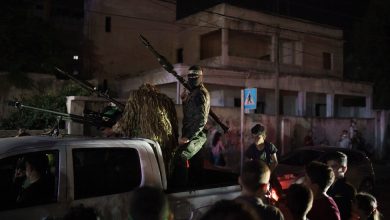The Complex History Behind a Vienna Philharmonic Tradition

If the Vienna Philharmonic’s annual New Year’s Concert is a global success, its legacy and reach rest on five pillars: a marvelous orchestra; internationally renowned conductors; a timeless repertoire, by the Strauss family and other composers of the 19th century; a splendid location, the gilded Musikverein; and TV broadcasts watched most recently by some 1.2 million people in 92 countries on five continents.
The event, which returns this weekend with Franz Welser-Möst leading the Philharmonic, is by now a familiar one, and a multiday affair with three concerts. Between the preview performance, the New Year’s Eve Concert and the New Year’s Concert, conductors and the orchestra are faced with the extreme demands of an emotionally and physically challenging marathon. Just days after the series of concerts, CDs and DVDs of the Jan. 1 concert are released for sale worldwide.
In the 19th century, the repertoire of today’s New Year’s Concert was part of a diverse concert business in the many entertainment venues that existed in almost every district of Vienna, including open-air stages. On weekends, this mixture of Viennese popular music, including swinging waltzes, wild polkas and military marches, enthused thousands of visitors, often as many as 10,000.
Gerald Heidegger, the editor in chief of the Austrian Broadcasting Corporation’s online services, rightly said in the series “Straussmania” on Topos, produced with the Vienna Institute of Contemporary and Cultural History: “Our image of the Biedermeier era is slightly distorted. It is not completely true that the era of the authoritarian state of Chancellor Metternich only led us to retreat into a private sphere, when one considers the music played in public.”
This kind of popular music was revolutionary in terms of its exuberance and the physical proximity encouraged by new forms of dance, and it accompanied Vienna’s booming development into one of the world’s largest cities in the rapid globalization during the years leading up to World War I. Today, in another era of fast-moving developments in technology and politics, the music has not lost any of its emotional impact; people still seem to seek joyful distractions.
The ostensible lightness of the countless waltzes, polkas and marches, however, hides a technique that challenges the musicians. Crucial to pulling it off is a nonverbal rapport between the orchestra and the conductor — another characteristic quality of the New Year’s Concert. And the selection of the repertoire requires an exciting dramaturgy in the combination of familiar and unknown pieces. This year, Welser-Möst has dedicated some 70 percent of the program to new works.
In the 19th century, the Strauss bands were very much competitors of the Philharmonic, which as the Vienna State Opera orchestra thrilled audiences in the Court Opera Theater while having to play for additional income as the private company known as the Vienna Philharmonic. The conductor Ernst Theis has researched the early interactions between these orchestras and noted that Eduard Strauss gave a New Year’s concert with a 60-person orchestra as early as Jan. 1, 1871, playing not only waltzes and polkas, but also lieder and opera excerpts.
A report from 1872 shows, however, that many members of the Philharmonic thought the Strauss clan and their music “harmed the reputation of the Philharmonic concerts.” Still, in 1894, the Philharmonic played at the celebrations marking Johann Strauss II’s 50 years in the business, and a few months before his death in 1899, he conducted the Court Opera orchestra during the performance of his “Die Fledermaus”for the first and last time, the final success of a remarkable career.
This ambivalence toward the Strauss family would change after World War I. From 1927 onward, the conductor Clemens Krauss in particular repeatedly chose to perform pieces from the Strauss repertoire, including at the Salzburg Festival. It was only in 1934, when he succumbed to the temptations of the Nazi regime and abruptly left Vienna for Berlin, that the Philharmonic’s infatuation with Strauss ended.
After the Anschluss in 1938, Krauss returned to Austria and revived the tradition of “Johann Strauss concerts” (a reference to both father and son). The musician Clemens Hellsberg, writing in 1992, and the historian Fritz Trümpi, in 2011, have emphasized Krauss’s role as the initiator of the “Johann Strauss concert” — then termed an “Extraordinary Concert” — as the calendar turned from 1939 to 1940. The proceeds went to the National Socialist wartime winter relief fund.
Krauss soon developed the next important pillar of the New Year’s Concert on its way to becoming a global music event: radio broadcasts throughout the German Reich. In November 1940, a contract with the Reich Radio Corporation established that there would be “four Philharmonic Academies in the Great Hall of the Musikverein in Vienna played for Greater German Radio” — on Dec. 13, 1940, and Jan. 1 (a “Johann Strauss concert”), Jan. 25 and March 15, 1941 — conducted by Krauss.
Without any intervention by Nazi potentates, the refreshing and emotionally uplifting “waltzing bliss” was a perfect fit with National Socialist propaganda, in particular its broadcasting policy — as were Mozart and Lehár. The program notes for the first of these series performed in Vienna not only stressed the intended mass impact of the contribution to “German music,” but also included ideological emphasis on the early history of waltz compositions in “suburban inns” as an “expression of the East Bavarian tribe that stood here on advance border watch,” which was, of course, a complete distortion and misinterpretation of the cultural developments in Vienna during the Biedermeier period.
The politicization of the music of the Strauss family and their milieu was taken to extremes when the Nazi propaganda minister Joseph Goebbels even had the composer’s partly Jewish descent covered up by falsifying the baptismal registers in Vienna. Incidentally, this act was accompanied by a diary entry in which Goebbels revealed the sheer absurdity of his antisemitic beliefs:
The selling point the New Year’s Concert enjoys today as a global event applied neither during World War II nor in the years that followed; it remained limited to Germany and, after the war, Austria. The former Johann Strauss concert was firmly a tradition, and Josef Krips, who conducted the Jan. 1, 1946, concert — the first to be billed as a New Year’s Concert — noted succinctly: “I began 1946 with the first New Year’s Concert in peacetime.”
Krips, stigmatized by the Nazis as a half-Jewish conductor, clearly had no problem with the continuation of the concert, whose last performance had taken place when the mood was apocalyptic. The New Year’s Concert lived on as solely Austrian cultural heritage — with Krauss as conductor until 1954, followed by Willi Boskovsky, the Philharmonic’s concertmaster, until 1979.
In 1959, the New Year’s Concert began to develop into an international event with its first television broadcast. The first color broadcast took place a decade later; the first overseas one, in 1972. And since 1980, the New Year’s Concert has been led by alternating, international conductors — a move that reflected its global interest.
But the formative phase of the New Year’s Concert — the Nazi era — went unexamined in Austria and abroad until the past decade. Today, those years are extensively documented on the Philharmonic’s website. International music history in particular can make an important contribution to a critical assessment of Austria’s role in National Socialism, World War II and the Holocaust.
In 2013, for instance, after much preliminary work, Clemens Hellsberg, then the chairman of the Vienna Philharmonic, initiated a critical documentary on the orchestra and commissioned a comprehensive study by a team of historians — including me — on members of the orchestra who were persecuted, murdered or forced into exile. This was followed in 2014 by the international conference “The Arts of Vienna: A Proud History, A Painful Past.”
Those artists whose lives were sidelined by the Third Reich will be memorialized with stones, placed at the sites where they last lived, that Daniel Froschauer, the Philharmonic’s chairman, will present to the public on March 23. In 2023, then, the orchestra aims to broadcast not just a rich tradition, but also a message of peace.
Oliver Rathkolb is a professor of contemporary history at the University of Vienna in Austria, and the chairman of the Vienna Institute for Cultural and Contemporary History and the Academic Committee of the House of European History in Brussels.
Lydia Rathkolb contributed research.




